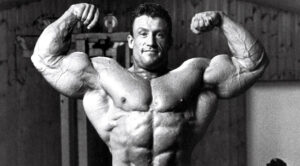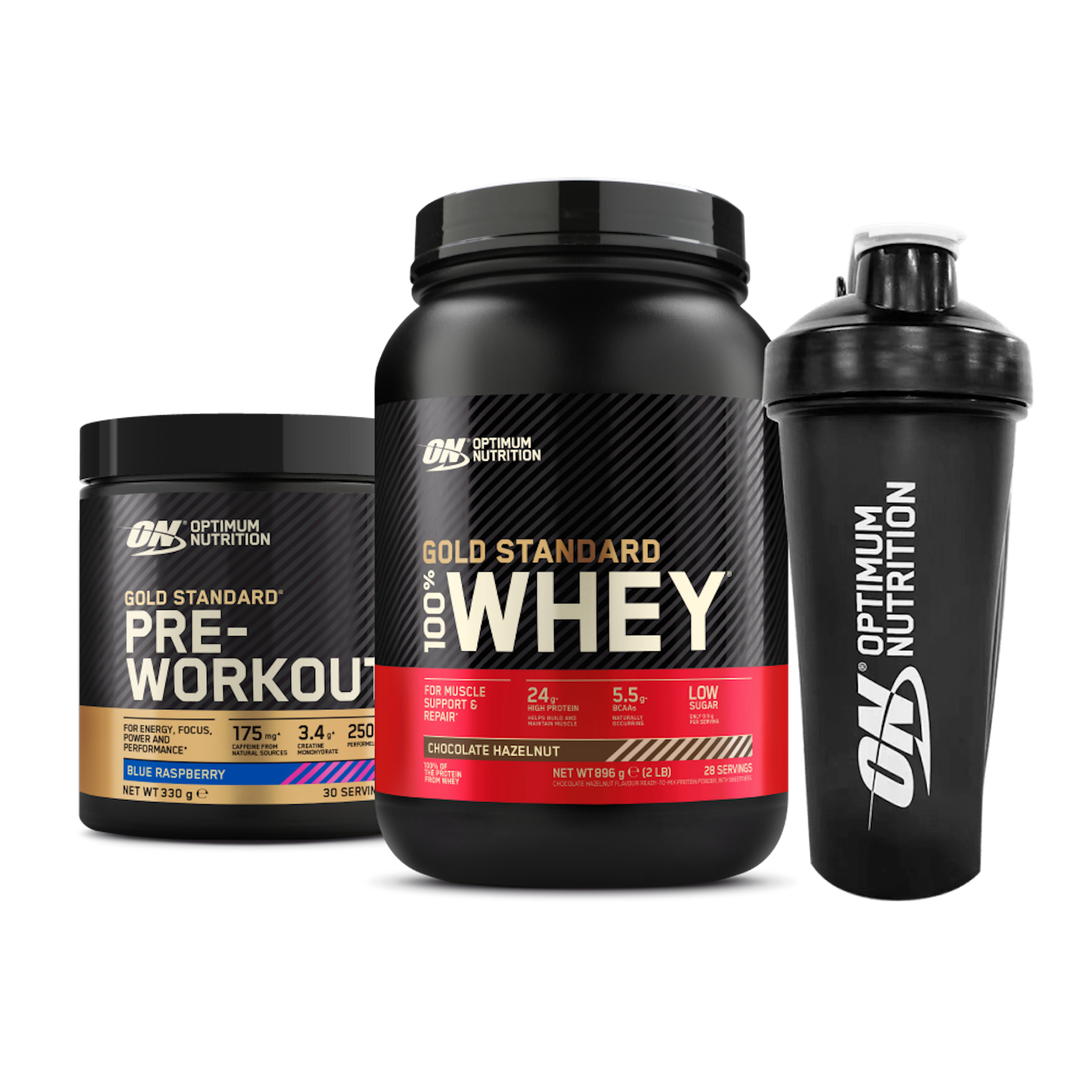Dorian Yates trained differently, he thought different, he looked different — and after six Olympia wins, people started to follow suit.
Elite-level bodybuilding is going through something of a transitional stage. The end of Phil Heath’s Mr. Olympia reign — which encompassed seven back-to-back victories (2011-2017) — has seen three different Mr. Olympia winners in as many years. The last time that happened was in the early 1980s.
Bodybuilding has, to this point, been dominated by dynasties or eras. It is impossible to sum up the sport’s history with a series of names: Arnold, Haney, Yates, Coleman, Cutler, Heath. Each man racked up multiple victories and helped to change the sport’s trajectory. Some, like Arnold Schwarzenegger, pushed bodybuilding into the mainstream. Others, like Ronnie Coleman and Lee Haney, set near impossible standards for the era.
[Related: How Bodybuilders Cut Weight While Still Onto Muscle]
But we’re focusing on Dorian Yates — a six-time Mr. Olympia who dominated the sport from 1992 to 1997 and ushered in what we know now as the “mass monster” era. He was lean, muscular, and fierce in his training. Yates’s active career was defined by a self-professed ‘monkish’ existence dedicated to being the biggest, most muscular man on the planet. For those six glorious years, “The Shadow” achieved just that. His combination of size and conditioning was never seen before, and it an astonishing sight.
As a six-time Mr. Olympia, Yates arguably did more to shape bodybuilding as a sport than any of his contemporaries. It is unsurprising then that he is still held in such high regard by fans.
Dorian Yates Changed the Way People Trained
Arthur Jones was the creator of the Nautilus machines and the High-Intensity Training (HIT) protocol. As a quick reminder, HIT training is defined simply as an intense effort over a short period of time. It is not to be confused with High-Intensity Interval Training (HIIT) which focuses on cardio.
HIT pushes the trainee beyond their limits over a small number of sets. At the time, HIT ran contrary to the mainstream bodybuilding world, which, in the 1970s and 1980s, was content with long, drawn-out workouts done multiple times a week.
Jones had supporters in the 1970s and 1980s, including Mike Mentzer (the man who Arnold controversially defeated at the 1980, Mr. Olympia). Mike was Jones’ most famous adherent. When he retired from competitive bodybuilding in 1980, it looked like HIT would disappear from bodybuilding.
While it stuck around, thanks to people like bodybuilders and exercise researcher Ellington Darden, HIT was no longer in vogue. (1) That is until Yates began tweaking it. Owing to his voluminous appetite for bodybuilding literature, Yates read the work of Mentzer and Jones early on in his career.
[Related: What to Know About Strength Training for Bodybuilders]
Before his first Olympia victory in 1992, he began to adopt HIT principles and trained with Mike Mentzer at Gold’s Gym. A clear fan of HIT, Yates took Mentzer’s advice regarding both training intensity and the number of sets needed for growth. Initially, for Yates, this meant one set to absolute failure, which, in time, he raised to several warm-up sets and then one to two sets to absolute failure. (2)
How do we know this? In 1996 Yates released a training video called Blood and Guts (shown above) which illustrated the intensity he brought to his training. Much like Mentzer a decade previously, Yates exhibited an intensity in his training few could understand. (3) This was a complete change from the “stimulate, don’t annihilate” ethos that Yates’ Olympia predecessor Lee Haney promoted. (4)
Haney, an eight-time Mr. Olympia (1984-1991), trained hard but always told fans to focus on the mind-muscle connection, train smart, and train consistently. This is not to say Haney did not train hard, but he trained well within his boundaries. Yates didn’t seem to have any. His leg day templates were simple, even deceptive. That is until you remembered the need to take sets to failure. (5)
- Lever Leg Extension: 3 x (15, 12), 10-12 reps
- Leg Press: 3 x (12, 12), 10-12 reps
- Hack Squat: 2 x (12), 8-10 reps
- Lever Leg Curl: 2 x(8-10), 8-10 reps
- Stiff-Leg Deadlift: 1 x 10 reps
- Single-leg Leg Curl: 1 x 8-10 reps
- Standing Calf Raise: 2 x (10-12), 10-12 reps
- Seated Calf Raise: 1 x 10-12 reps
Training Note: Perform 1-2 warm-up sets on each exercise (indicated in parentheses) with progressively heavier weights before completing an all-out set.
For the general public, this raised the bar. Thousands of bodybuilders began experimenting once more with the HIT principles Yates followed and even more adopted his intensity. While HIT may still be a fringe activity, the intensity Yates brought to his training explains, in part, the intense training many used in the 1990s and early 2000s.
Dorian Yates Changed the Way People Looked
Dorian Yates helped to change the way fans and competitors thought about bodybuilders’ physique. From 1992 to 1997, Yates’ ever-growing physique brought a new level of muscularity and leanness few had seen before. Though he’d been on the bodybuilding circuit for years prior, 1992 marked Yates iconic showcase. The 30-year-old Englishman stepped on stage in the Helsinki Ice Hall in Finland, weighing roughly 260 pounds with conditioning so impressive that people could see his muscle fibers (a level of leanness now known as “grainy”). Yates was the first bonafide “mass monster” in bodybuilding.
In essence, Yates’ era moved the needle from the aesthetics of Arnold, Zane, Bannout, and Haney to the mass monster era of Coleman, Cutler, Heath, and, more recently, Big Ramy, who won the 2020 Mr. Olympia at nearly 290 pounds. This was not to everyone’s liking. Yates was criticized for his “bubble gut” and his excessive muscularity at multiple points during his career. (6) There is no denying, however, that he brought something remarkable to the Olympia stage. His most impressive showing, 1993, is downright incredible.
[What You Need to Know About How to Increase Strength]
Yates posing, in particular, always played to the idea that Yates was some sort of freakish monster. A prime example of this was the 1996 German Grand Prix — Yates’ posing included a call-line voiceover which directed him to pose. It seemed to signify his machine-like efficiency.
Yates’ most famous critic during this time was none other than Arnold Schwarzenegger. During the 1990s, Arnold criticized bodybuilding, which he believed privileged muscle mass over things like symmetry and appearance. For this reason, Arnold criticized Yates at several turns for embodying this mass monster look. (7)
Arnold, and those who championed the “golden age” of bodybuilding, called for stricter drug testing protocols which, they believed, would curb the excesses deemed to be ruining the sport. Fans of the 1990s bodybuilders, on the other hand, claimed that Yates was pushing the boundaries of what was possible.
[Related: How to Count Macros for Weight Loss, Muscle Gain, and Maintenance]
Where one falls on the Yates/Schwarzenegger divide is largely a matter of personal preference and how they came to the sport of bodybuilding. For those who grew up watching Pumping Iron, the ‘mass monster’ era was ruining the sport. For later fans, Yates represented an evolution. (8)
Regardless of these debates, which still continue in bodybuilding circles, there is no denying Yates’ pivotal role in this. Yates’ muscularity and leanness raised expectations of what a champion bodybuilder looked like.
Dorian Yates Changed Where People Trained
Here’s a quick history lesson. Before Dorian Yates, there were eight Mr. Olympia winners. They hailed from different countries ranging from Cuba (Sergio Oliva) to Lebanon (Samir Bannout), but they shared one defining similarity. They were all based in the United States. More than that, the majority lived and trained on the West Coast.
Since the 1960s, the West Coast, specifically California, had been a hotbed of bodybuilding activity. It was home to Muscle Beach, Gold’s Gym, and, after 1977, the location synonymous with the cult classic film Pumping Iron. For economically minded bodybuilders, it was also the headquarters of Joe and Ben Weider, the men responsible for creating the Mr. Olympia. (9)
While the Weiders did not control who was crowned Mr. Olympia, they were the sport’s kingmakers. If bodybuilders wanted to make money during the 1990s, they needed to work for the Weiders.
If Joe liked you, it meant magazine covers, supplement deals, and paid appearances. California and America offered elite training partners, the chance to train at the sport’s Mecca, and money. (10)
Dorian worked for Weider and appeared in his magazines on multiple occasions. He did not, however, stay in America. Instead, Dorian trained in the Temple Gym in Birmingham, a gym he founded in England in 1986.
[Related: 10 Bodybuilding Poses — What They Are and How to Do Them]
Yates’ Temple Gym, shown above, was the definition of a ‘dungeon gym.’ It was not glamorous. It was a place where the serious bodybuilder trained. Dorian would spend most of the year training in secrecy in Birmingham and then fly out to the Olympia. Yates rarely flaunted his physique in public either, choosing to don baggy clothes. In an interview with Muscle & Fitness, he described himself as an “anti-bodybuilder.”
“I didn’t like people looking at me, I didn’t like being on stage. I was introverted. To me, bodybuilding was a mission of self-mastery. I love the training, I love the challenge, and I love the individuality of the sport — it was all down to me.” (11)
It was for this reason that the late bodybuilding journalist Peter McGough nicknamed Yates ‘The Shadow.’ He would disappear for months at a time, never tease his physique, and then dominate any show he entered. (12) Yates made it clear that you didn’t have to be in America to become the biggest name in bodybuilding.
In this sense, Yates was a precursor to the latest wave of bodybuilders who train outside the United States. The most sensational example is, of course, Brandon Curry. Winner of the 2019 Mr. Olympia, Curry spent most of that year at the Oxygen Gym in Kuwait. Curry, in more ways than one, was following Yates’ example.
Wrapping Up
Yates was and continues to be a controversial figure in bodybuilding. He refused to train the way most people trained. He refused to train where most people trained. And he refused to look the way most people looked. His headstrong nature and monkish discipline underpinned his success. Yates moved bodybuilding into the age of the mass monster. No subsequent Olympia has evolved the sport in the same way.

For more news and updates, follow IFBNewsfeed.Org on Facebook, Twitter, and Instagram.
References
- Darden, Ellington. The New High-Intensity Training: The Best Muscle-Building System You’ve Never Tried. Rodale, 2004.
- Little, John. ‘Heavy Duty: The One Set and the Mentzer-Yates HIT Sessions.’ Iron Man, June 1, 2002. https://www.ironmanmagazine.com/heavy-duty-the-one-set-and-the-mentzer-yates-hit-sessions/
- Ibid.
- Skip Hill, ‘Stimulate Don’t Annihilate,’ EliteFTs, November 13, 2016. https://www.elitefts.com/education/stimulate-dont-annihilate/
- ‘Dorian Yates Workout: The Age of Intensity.’ My Workout Plans. https://www.myworkoutplans.net/dorian-yates-the-age-of-intensity/
- Conor Heffernan, ‘Tracing the Mass Monster in Bodybuilding,’ Physical Culture Study, September 10, 2015. https://physicalculturestudy.com/2015/09/10/tracing-the-mass-monster-in-bodybuilding/
- Ibid.
- Pratik Thakkar, ‘The Man Who Actually Started The Trend Of Getting As Big As Possible In Bodybuilding,’ Mensxp, September 8, 2020. https://www.mensxp.com/health/body-building/47612-the-man-who-actually-started-the-trend-of-getting-as-big-as-possible-in-bodybuilding.html
- Ozyurtcu, Tolga, and Jan Todd. “Critical Mass: Oral History, Innovation Theory, and the Fitness Legacy of the Muscle Beach Scene.” The International Journal of the History of Sport (2021): 1-18.
- Ibid.
- Andrew Gutman, “Bodybuilding Legend Dorian Yates on Marijuana, Weight Loss, and Spiritual Healing,” Muscle & Fitness, https://www.muscleandfitness.com/flexonline/flex-news/bodybuilding-legend-dorian-yates-marijuana-weight-loss-and-spiritual-healing/
- Greg Merritt, ‘The Life of Peter McGough (1949-2020)”, The Barbell, December 31, 2020. https://www.thebarbell.com/the-life-of-peter-mcgough-1949-2020/.






